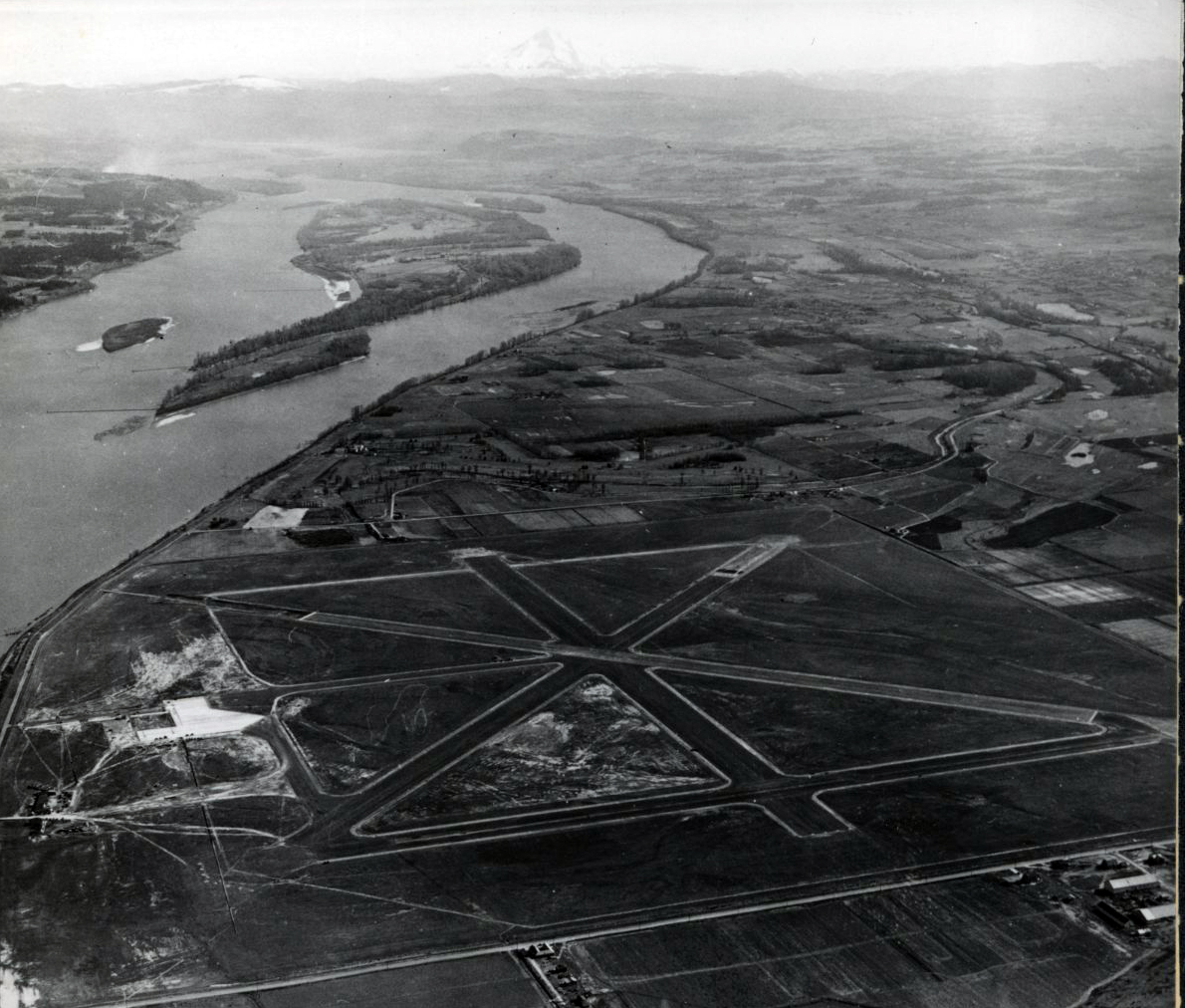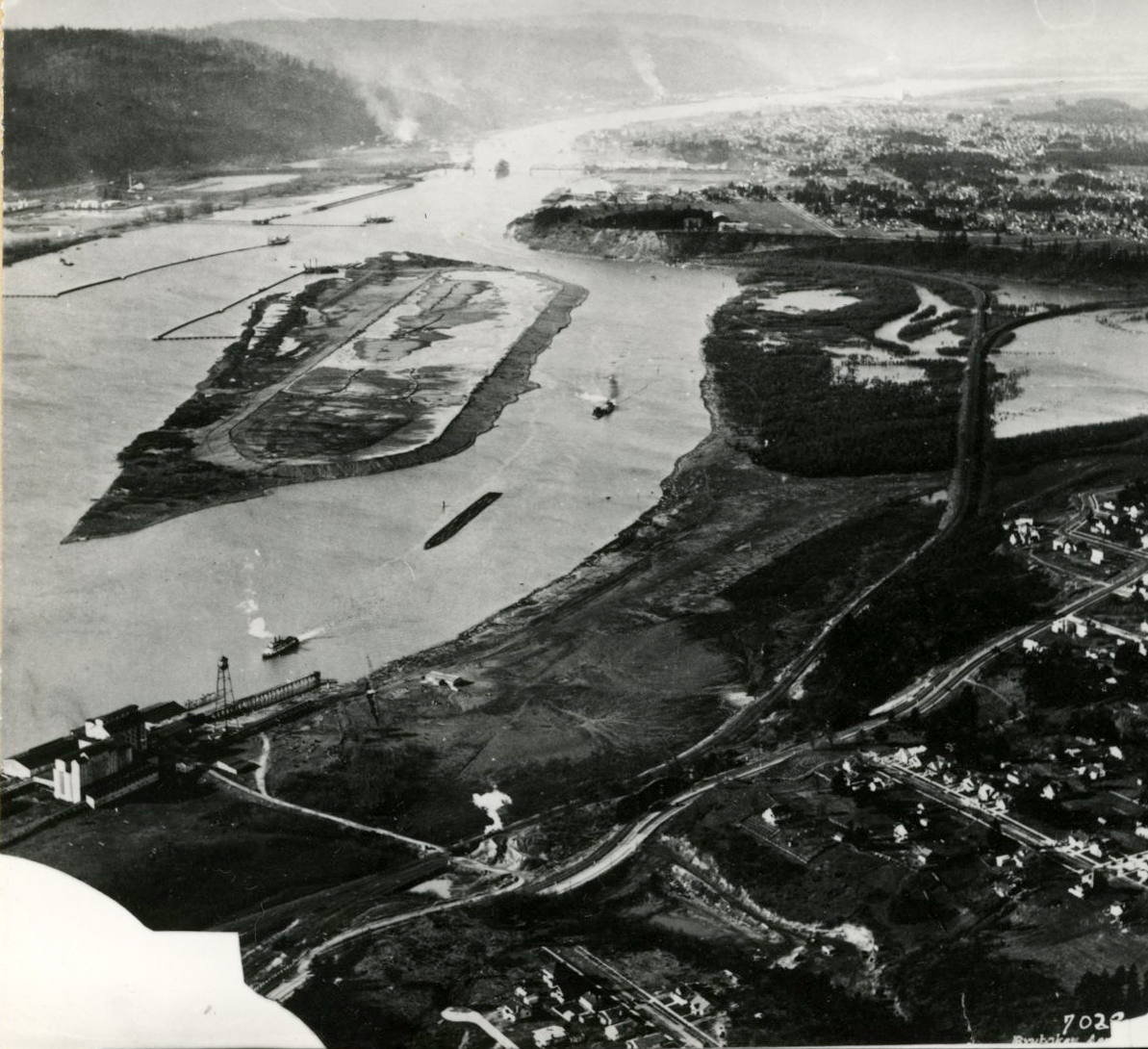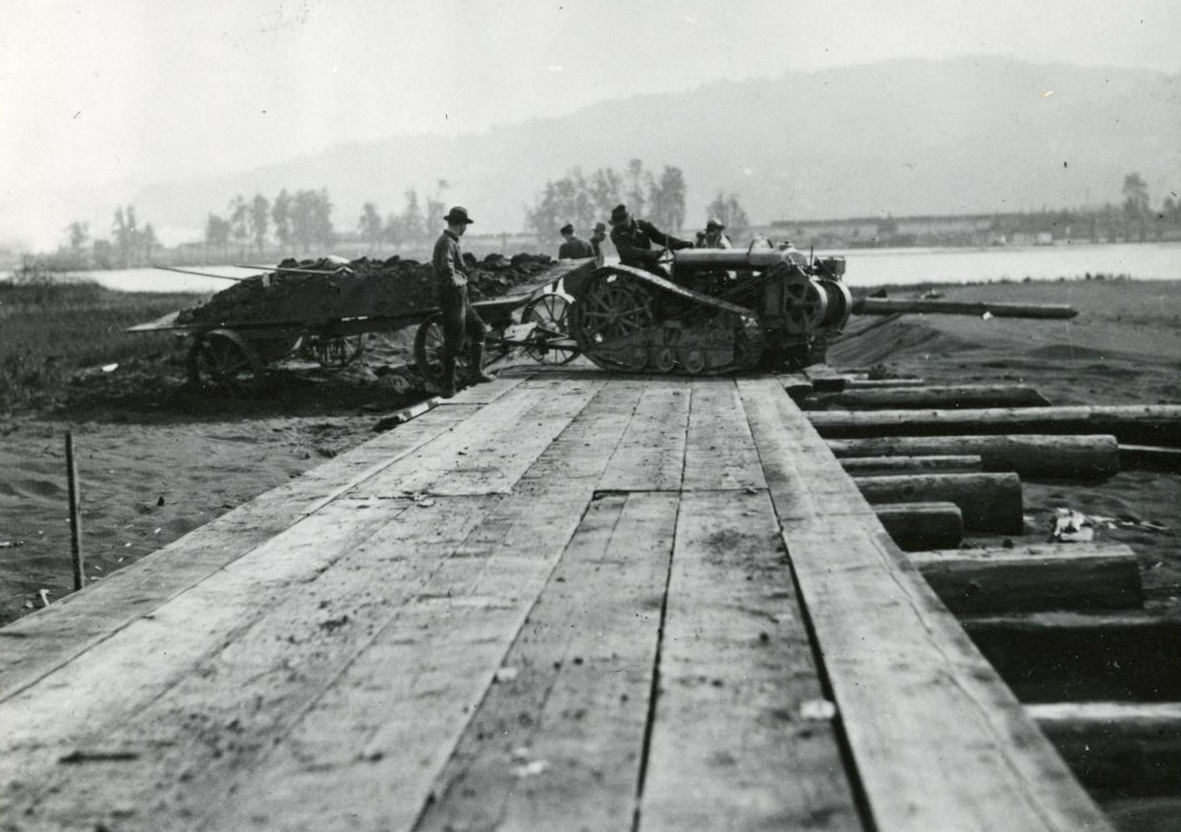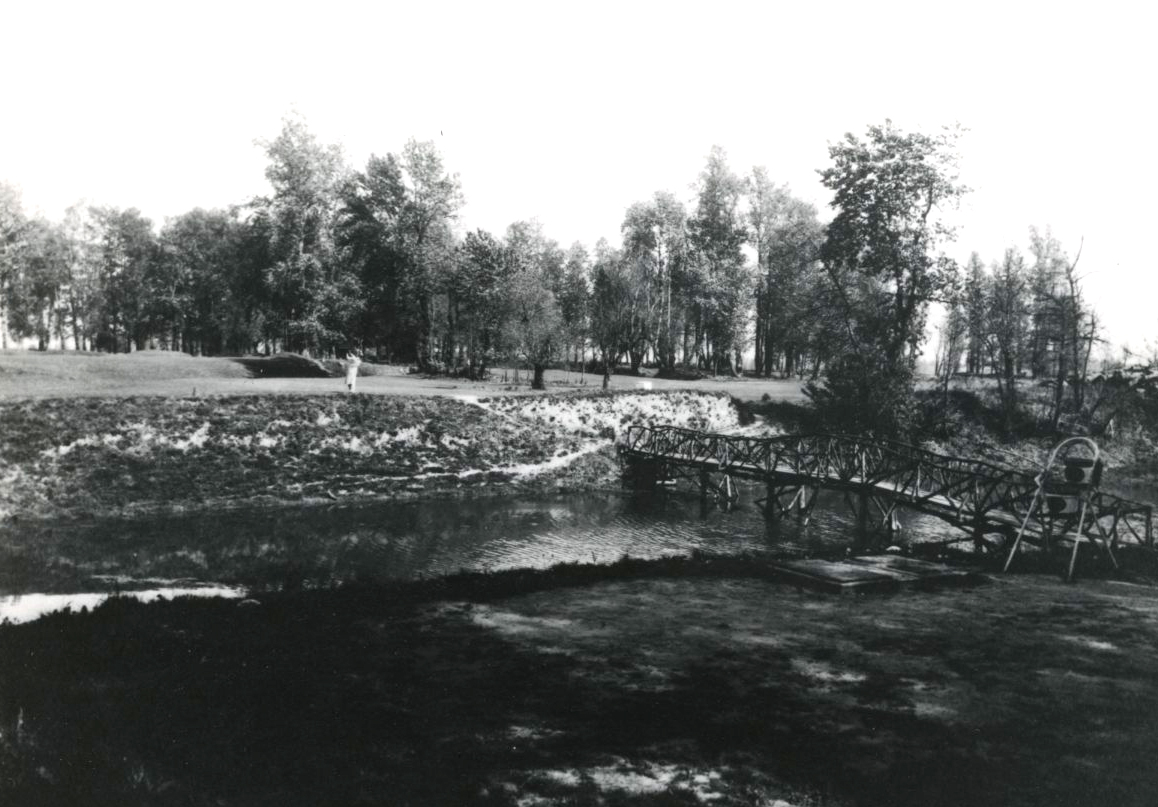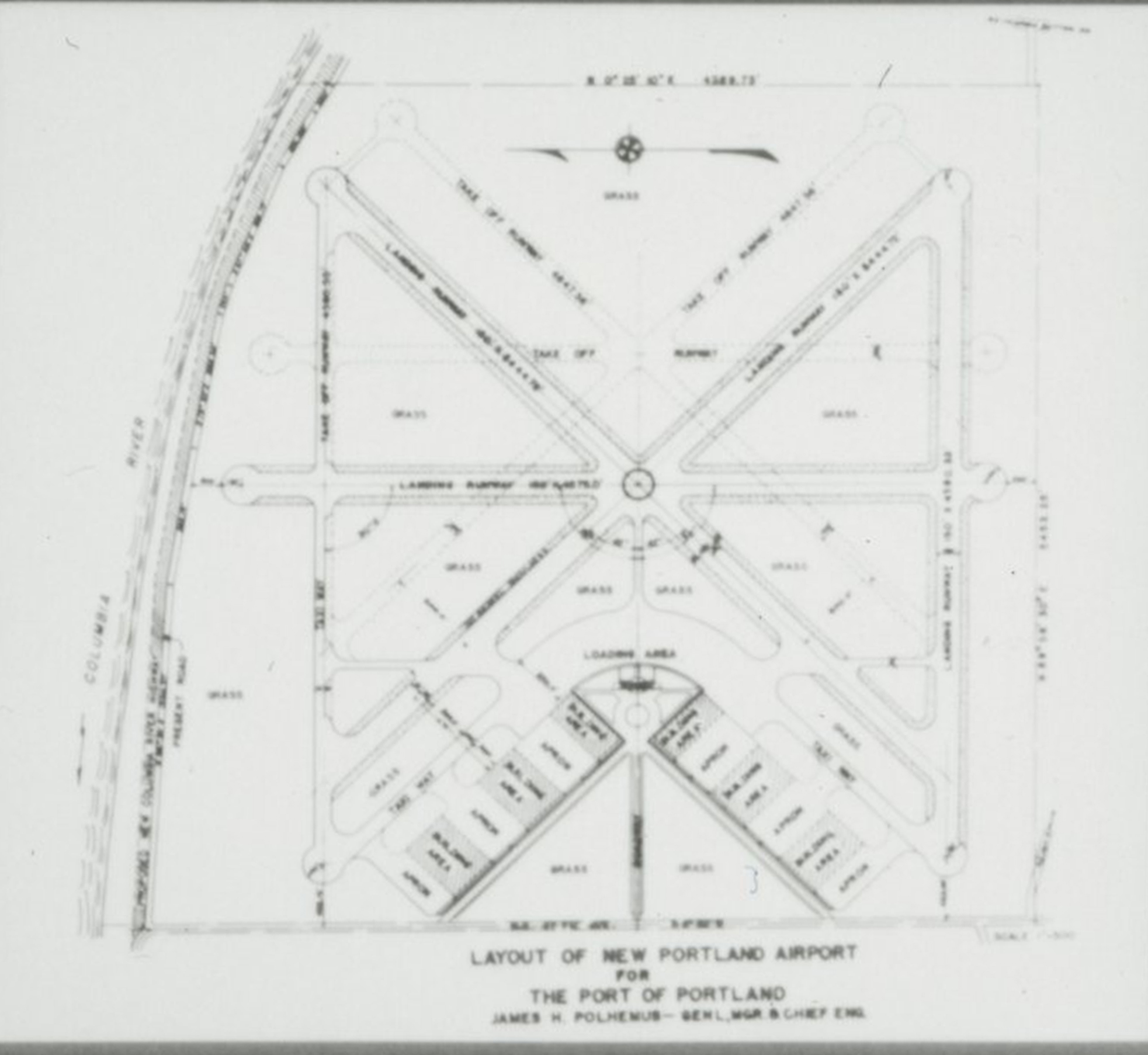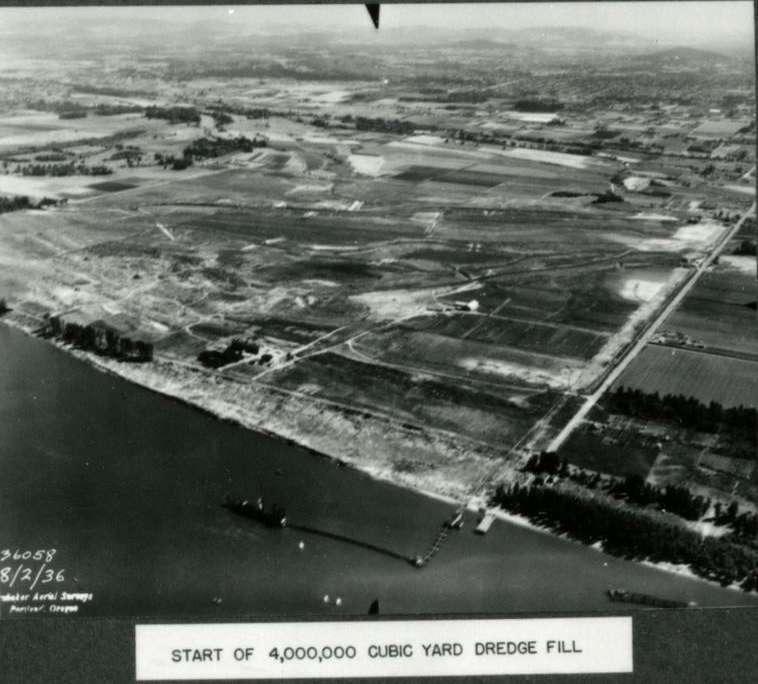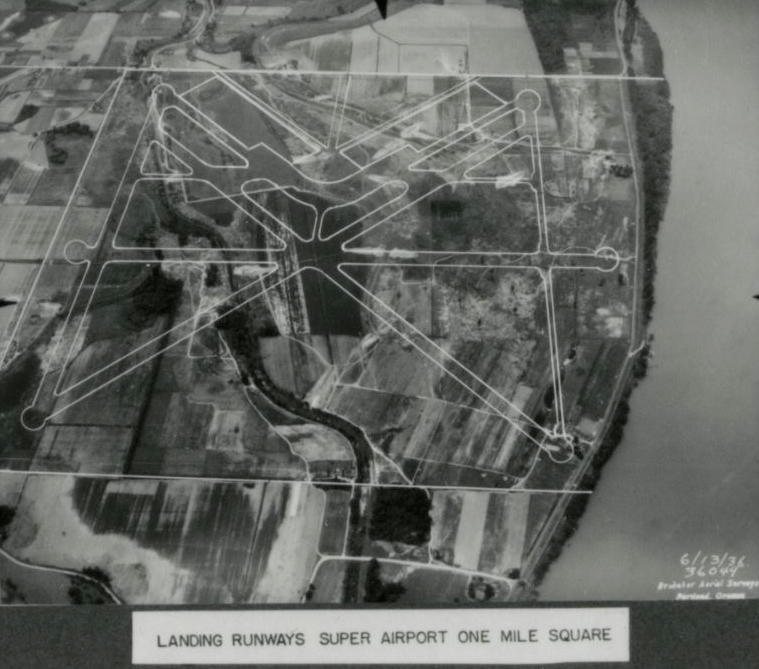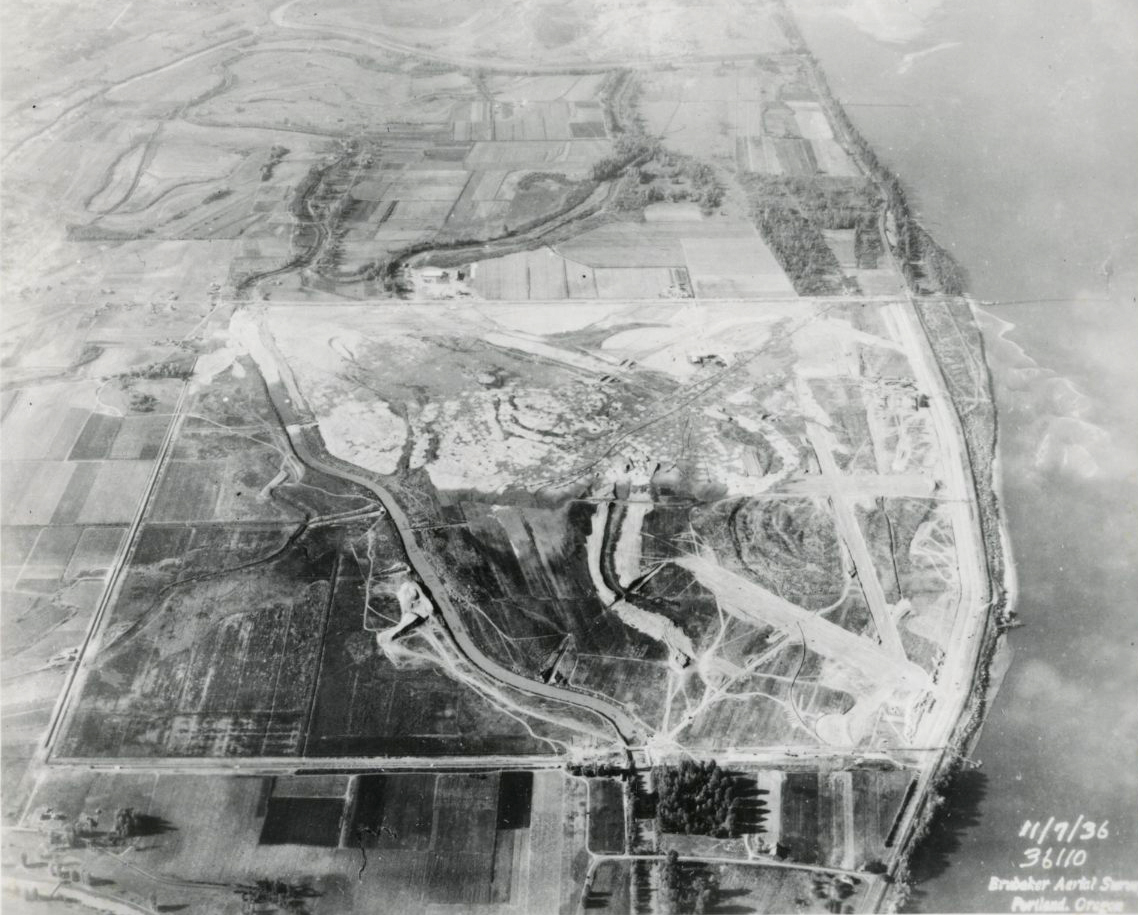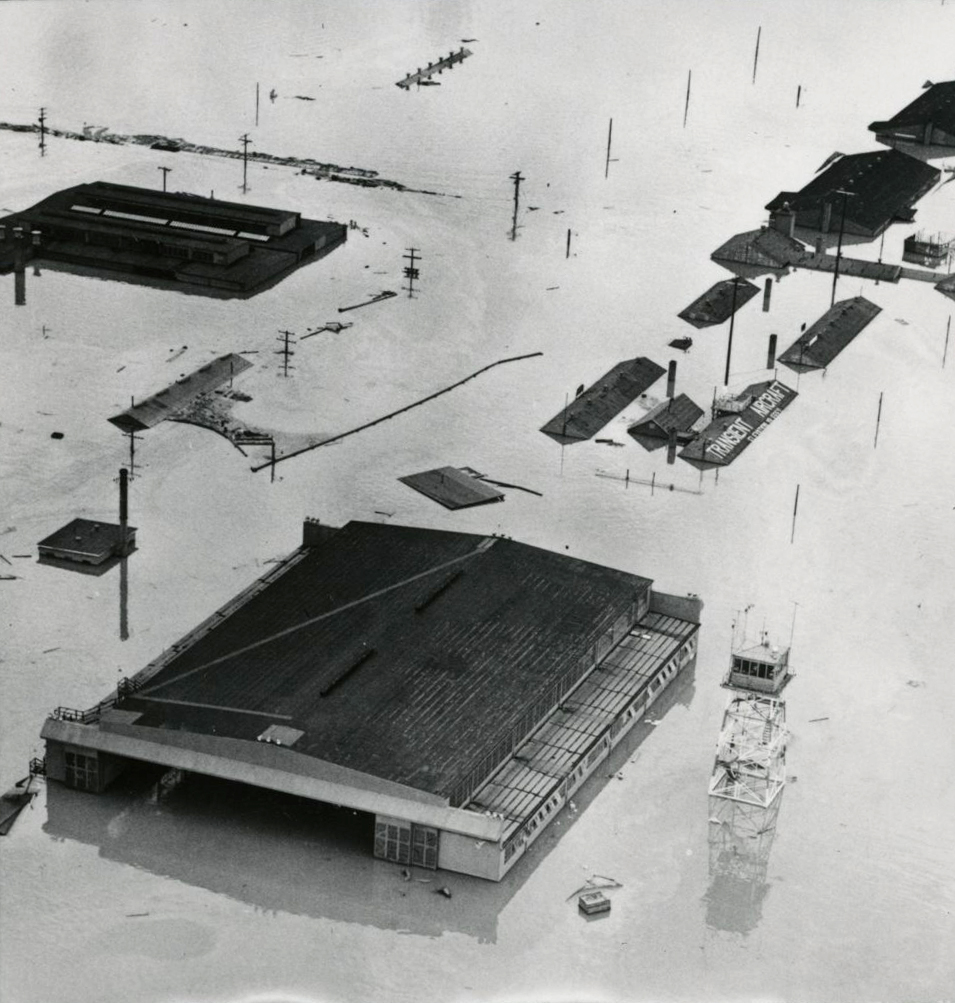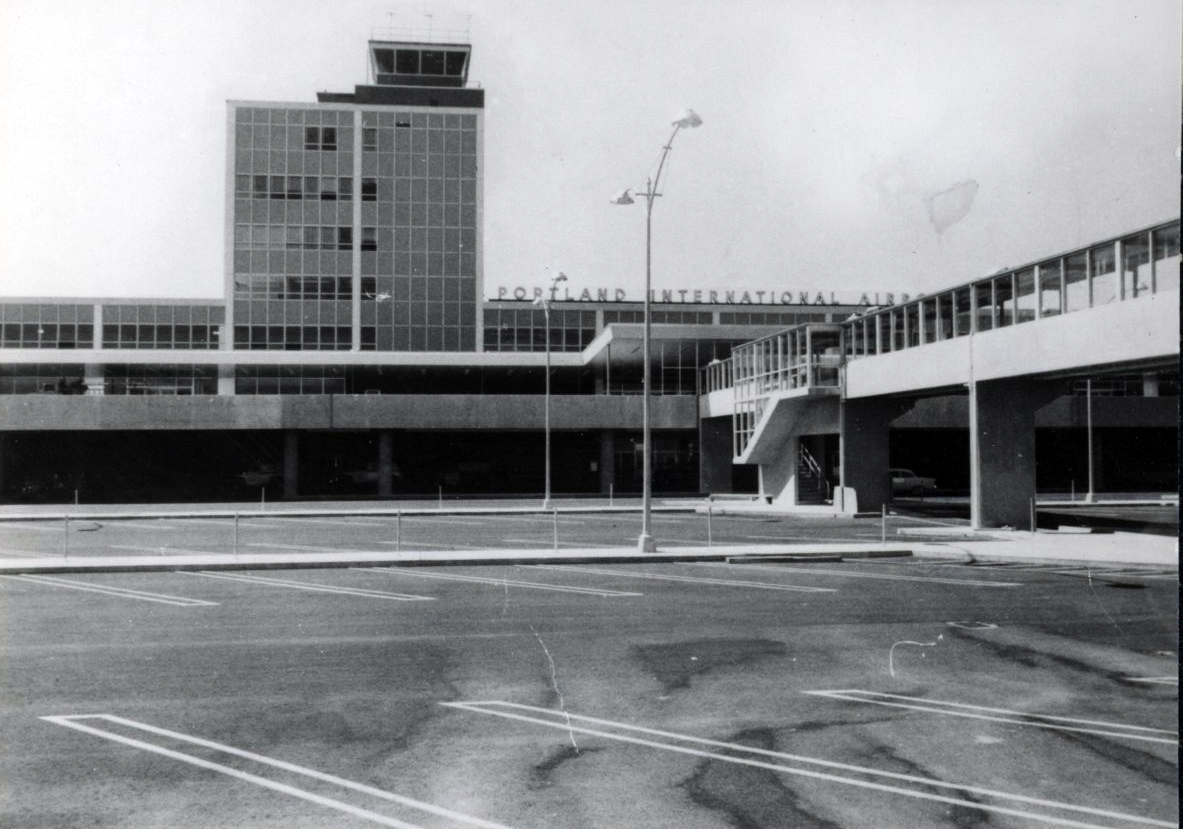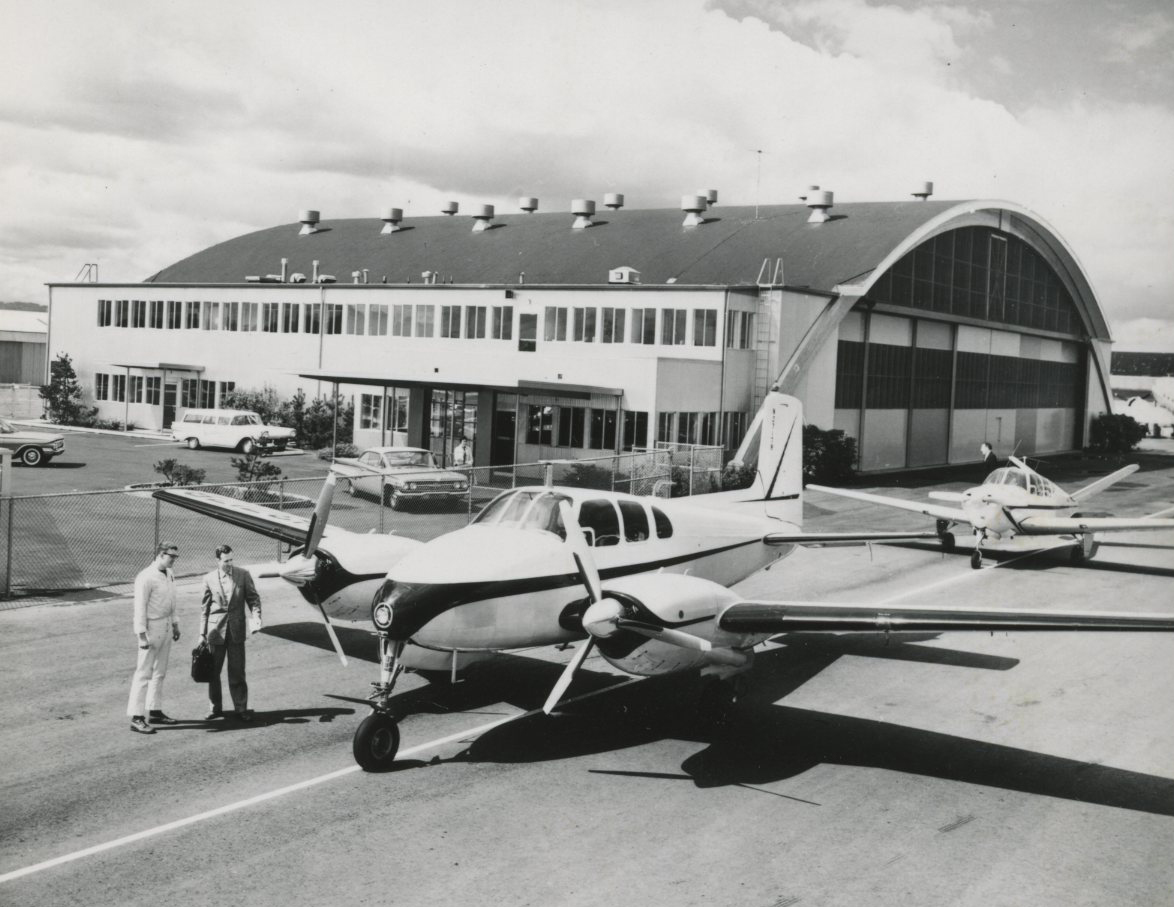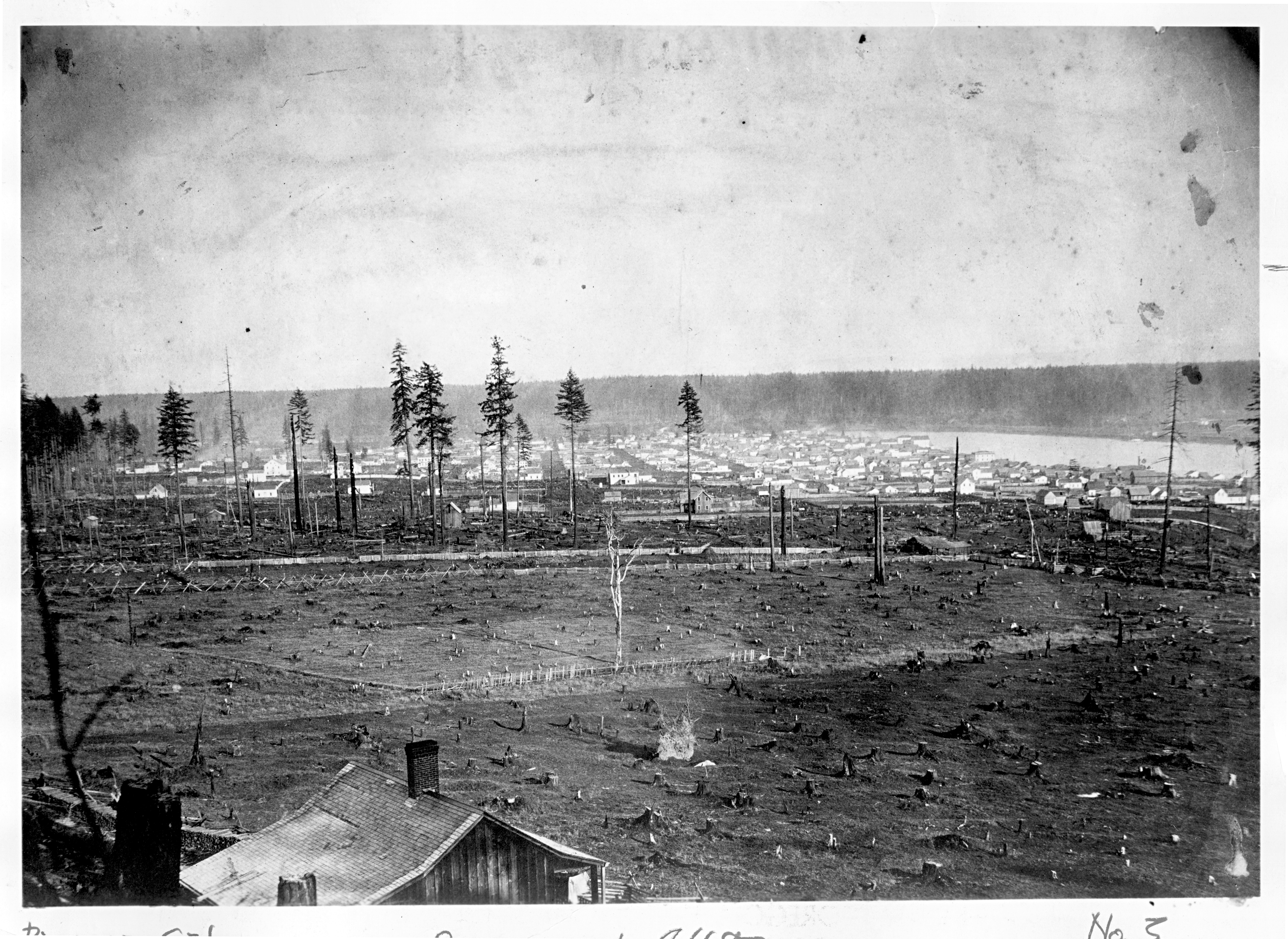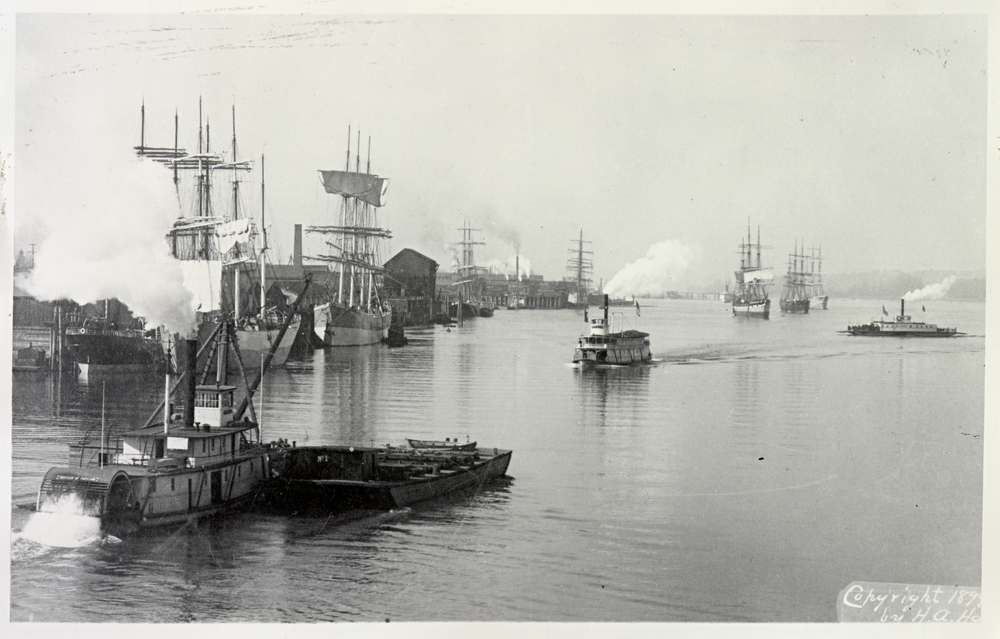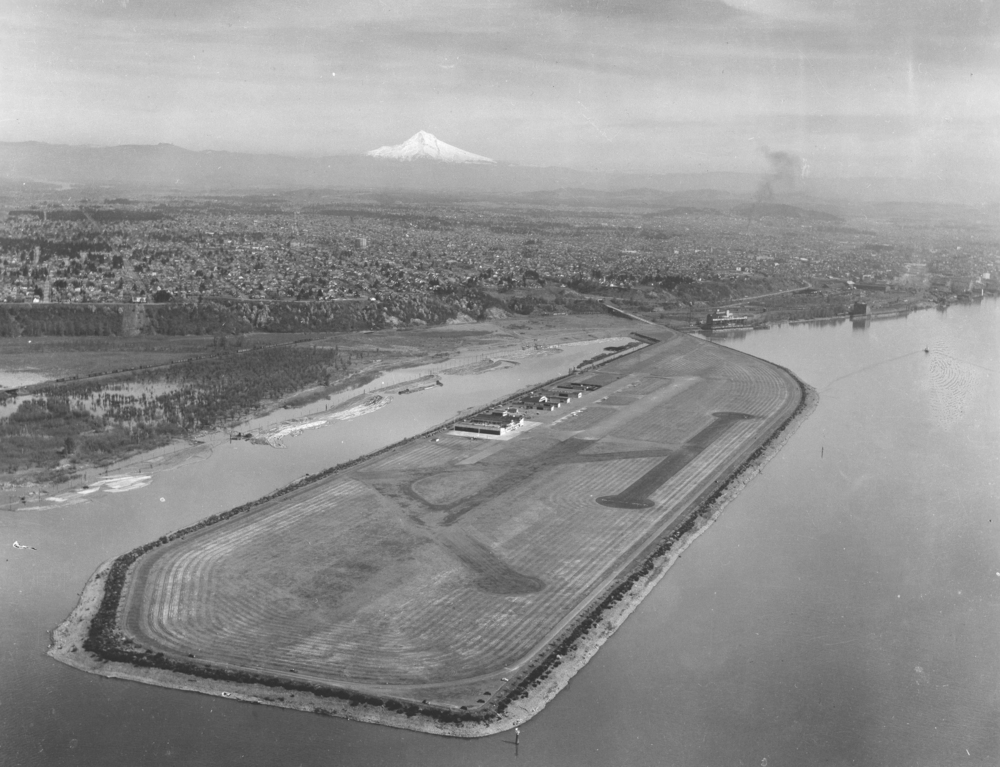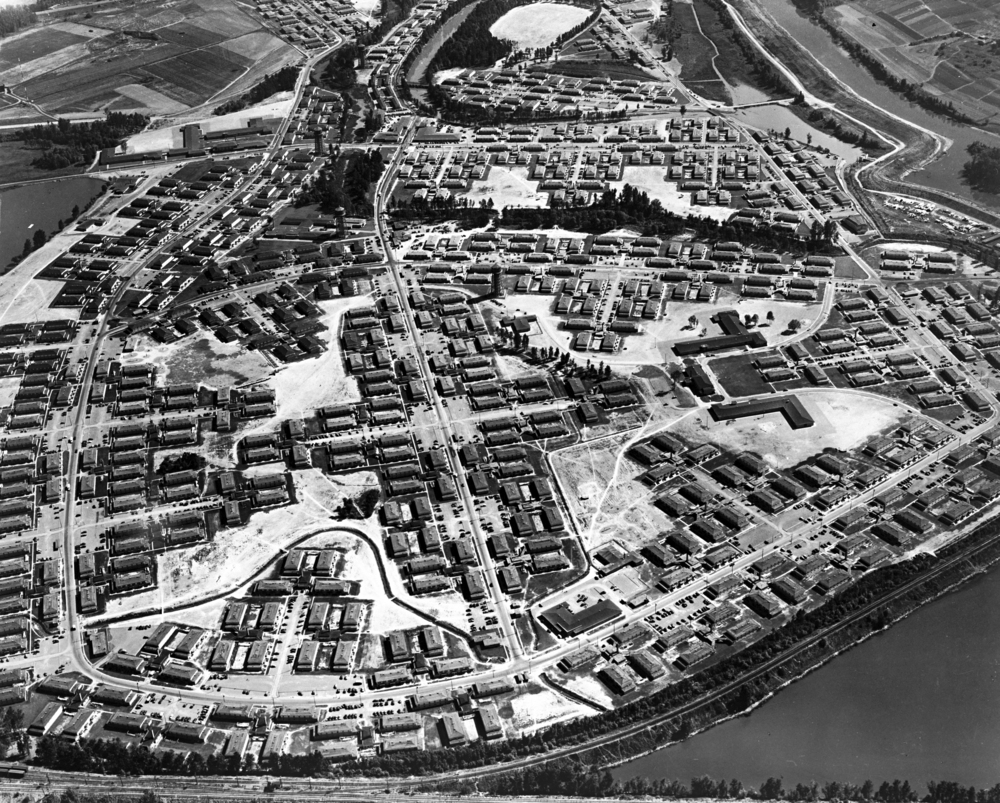Portland has used two locations for its major commercial airport—Swan Island from 1927 to 1940 and the floodplain of the Columbia River since 1940. The second site has seen repeated adjustments of runways and expansions and upgrades of terminal facilities. In 2016, it served more than 17 million passengers with direct flights to 75 domestic and 11 international destinations.
Swan Island in the mid-1920s was marshy, undeveloped land. A major dredging project shifted the Willamette River shipping channel to the west of the natural island, with the dredge spoils used to fill and level the island and to attach it to the east bank of the river.
Construction of the airport by the Port of Portland began in 1926, and Swan Island Municipal Airport opened for limited use on September 14, 1927, with ceremonies that included a landing by Charles Lindbergh, who was on a nationwide tour flying The Spirit of St. Louis. Lindbergh, the Oregon Journal reported, “landed like a feather with the punctuality of a crack railroad train.” As the volume of air travel and the size and runway needs of commercial aircraft increased, however, the Swan Island site was inadequate for the expected growth in aviation.
In 1936, the City of Portland purchased 700 acres of land along the Columbia River managed by Multnomah Drainage District No.1 with the proceeds of a $300,000 bond issue. This, too, was marshy riverside land that needed 4 million cubic yards of dredged fill to be usable. A $1.3 million grant from the Works Progress Administration helped pay construction costs. The new Portland-Columbia Airport was completed in 1940, with its opening ceremony on October 13. Swan Island was converted to a war production site.
The new terminal was located off Marine Drive, and the runways formed an X toward the western side of the present airport. The airport’s International Air Transport Location Identifier PDX was adopted after World War II, by adding X to the existing National Weather Service identifier (the same approach taken by Los Angeles and Phoenix when the increase in airports around the country led to a shortage of two-letter identifiers).
The Port of Portland constructed a new terminal in 1959 between two long parallel runways that had been constructed in the 1950s. That runway configuration remains in use, and the 1959 terminal remains the core of the passenger service facilities. Terminal expansions and upgrades followed in 1977, 1986, 1992, and 1994. A new FAA tower, parking garage, and canopy over drop-off lanes were completed in 1999. An expansion scheduled for completion in 2020 will add six gates to concourse E on the north side of the terminal. In 2015, replacement of the airport's thirteen acres of thirty-year-old carpet sent many Portlanders on a nostalgia trip and betokened the high local regard for the facility.
Light rail service to the airport began in 2001, and the Port of Portland relocated its headquarters to an airport office building in 2010. A proposal to add a third runway by filling a portion of the Columbia River to connect with Government Island failed in the late 1960s in the face of strenuous environmental opposition to such a major disruption and alteration of the river.
Portland International Airport is a feeder airport, rather than a hub like Seattle-Tacoma or Denver. As a consequence, in 2015 it ranked 30th among U.S. airports in total passenger boardings. The number of boardings is thus slightly less than might be expected from the ranking of the Portland-Vancouver Metropolitan Area as twenty-third in population. In the same year, the airport ranked twenty-second in air cargo tonnage, and air freight service is particularly important for the Portland-area electronics industry.
PDX frequently gets high marks from travelers for its wide concourses, convenient parking, and variety of locally based shops and restaurants that do not take the frequent airport price markup. Since the 1960s, the airport has merited “international” in its name, with direct passenger flights, sometimes seasonal and sometimes discontinued, to Mexico, Canada, the Netherlands, Japan, Korea, Germany, Iceland, and, planned for 2017, the United Kingdom.
-
![]()
Aerial of Portland Columbia Airport, March 1940.
Courtesy Oregon Hist. Soc. Research Lib., 014394
-
![]()
Aerial of Swan Island Airport, 1927.
Courtesy Oregon Hist. Soc. Research Lib., Orhi45552
-
![]()
Temporary plank road to Swan Island Airport.
Courtesy Oregon Hist. Soc. Research Lib., 009372
-
![]()
Sprit of St. Louis visits Portland, Sept. 15, 1927.
Courtesy Oregon Hist. Soc. Research Lib., 005102
-
![]()
Alderwood Country Club in NE 82nd, now Portland Airport, c.1915.
Courtesy Oregon Hist. Soc. Research Lib., 020050
-
![]()
Plans for Portland's new "Super Airport".
Courtesy Oregon Hist. Soc. Research Lib., Orhi083570
-
![Location on left, white outline]()
Aerial view of proposed "Super Airport" .
Location on left, white outline Courtesy Oregon Hist. Soc. Research Lib., Orhi083570
-
![]()
Aerial of dredging location for new Portland Airport.
Courtesy Oregon Hist. Soc. Research Lib., Orhi083570
-
![]()
Proposed runways for Portland's new "Super Airport".
Courtesy Oregon Hist. Soc. Research Lib., Orhi083570
-
![]()
Aerial view of Portland International Airport construction, 1936.
Courtesy Oregon Hist. Soc. Research Lib., 014395
-
![]()
Flood waters at the Portland Airport, 1948.
Courtesy Oregon Hist. Soc. Research Lib., 014826
-
![]()
Aerial of Portland Int'l Airport, with United Terminal, 1952.
Courtesy Oregon Hist. Soc. Research Lib., 014393
-
![]()
A newly built terminal, February 1953.
Courtesy Oregon Hist. Soc. Research Lib., 002093
-
![]()
Airmen plot aircraft positions tracked by radar, Portland International Airport, 1954.
Courtesy Oregon Hist. Soc. Research Lib., 018198
-
![]()
Main terminal, August 1958.
Courtesy Oregon Hist. Soc. Research Lib., 002091
-
![]()
New Flightcraft, Inc., private aviation terminal at Portland Airport, 1961.
Courtesy Oregon Hist. Soc. Research Lib., 014392
Related Entries
-
![Portland]()
Portland
Portland, with a 2020 population of 652,503 within its city limits and …
-
![Port of Portland]()
Port of Portland
The Oregon Legislature created the current Port of Portland in 1970 by …
-
![Swan Island]()
Swan Island
Swan Island sits about eight miles above the mouth of the Willamette Ri…
-
![Vanport]()
Vanport
In its short history, from 1942 to 1948, Vanport was the nation’s large…

